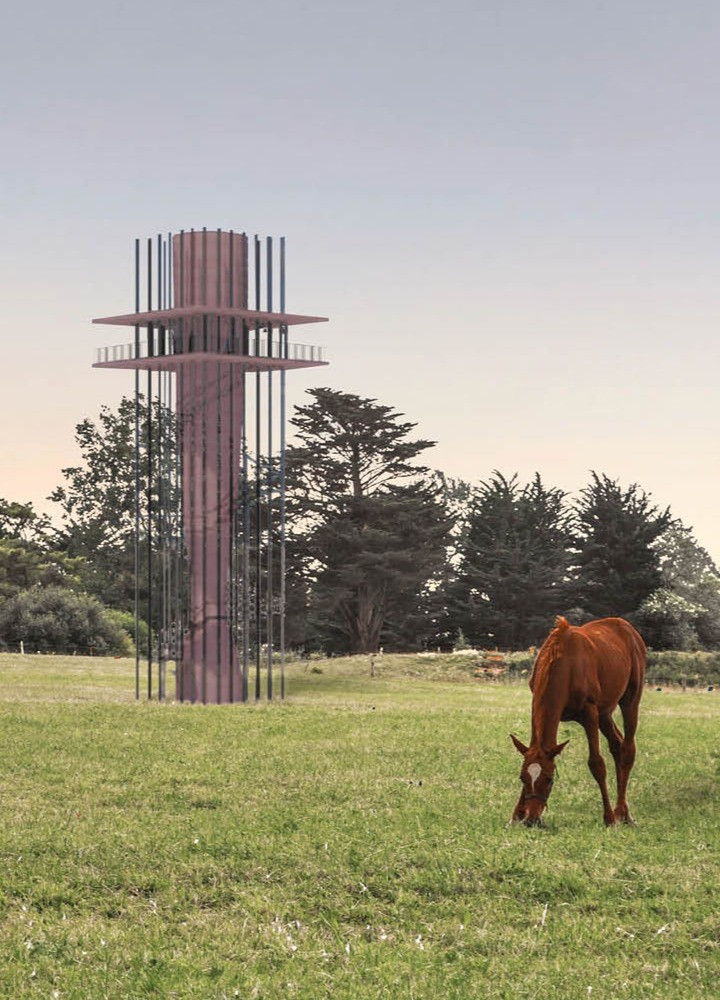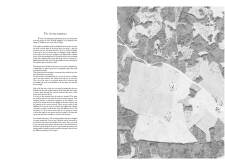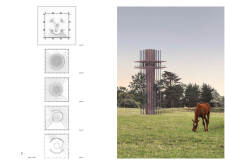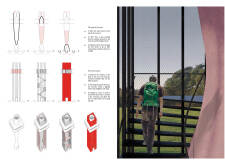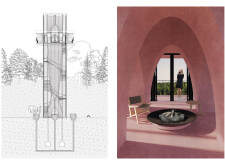5 key facts about this project
The form of the Viewing Amphora is derived from the shape of a traditional amphora, symbolizing hospitality and connectivity. It stands at a height of 27.5 meters, establishing a prominent physical presence that invites exploration from afar. The cylindrical design not only reinforces its identity within the landscape but also serves practical purposes, such as maximizing vistas in all directions. Visitors ascend through a series of carefully designed levels, each providing a unique perspective. This progression evokes a sense of journey, with open terraces and large windows facilitating a continuous dialogue between the interior space and the natural world.
A central feature of this architectural design is its materiality, which plays a critical role in fulfilling both aesthetic and functional objectives. The structure employs a variety of materials, including steel for its framework, wood for flooring and surfaces, concrete for foundational elements, and glass for expansive openings. This diverse material palette is selected not only for its performance attributes but also to create a warm and inviting atmosphere. The contrast between the solidity of concrete and the transparency of glass enhances the spatial experience, ensuring that the building remains light-filled and connected to its surroundings.
The Viewing Amphora also emphasizes sustainability, making use of local materials wherever possible. By situating the structure within its natural context and employing environmentally sensitive design strategies, the project minimizes its ecological footprint while enhancing the overall user experience. It includes water management systems that thoughtfully direct water through the site, demonstrating a practical approach to environmental stewardship that is often overlooked in contemporary architectural design.
In terms of function, the Viewing Amphora is not merely a lookout tower; it is a space designed to foster engagement with the landscape. Visitors are encouraged to reflect on their environment and appreciate the beauty of Eastern Latvia from various vantage points within the structure. This experiential quality is vital to the project, serving as a reminder of the importance of natural spaces in our daily lives.
The unique design approach of the Viewing Amphora lies in its ability to merge form with function while reinforcing a connection to the environment. The careful consideration of users' experiences guides the architectural narrative, ensuring that each aspect of the design contributes to a cohesive whole. The spiral journey through the levels, the interplay of materials, and the integration of natural elements all work together to create a structure that is both intentional and inviting.
For those interested in delving deeper into the architectural dimensions of this project, further exploration of architectural plans, sections, designs, and innovative ideas related to the Viewing Amphora is highly encouraged. This keen insight offers a broader understanding of how contemporary design can facilitate meaningful interactions between individuals and the landscapes they inhabit. Engage with the presentation of this project to appreciate its thoughtful approach to architecture and the ways it fosters a closer relationship with nature.


